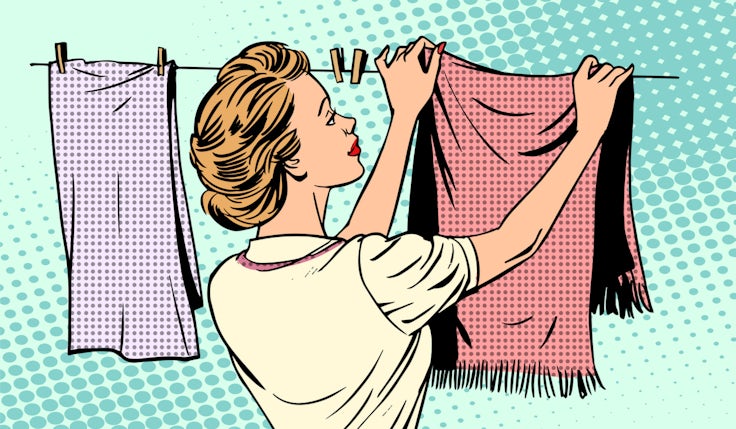Marketing to female audiences is becoming shockingly polarised
Much progress has been made in traditional media to stamp out everyday sexism in marketing, but social media is fuelling unattainable and idealistic images of women, which are particularly damaging to young girls.

The end/start of the year is always a good time for looking both back and forwards. It is almost five years since we began the research for our book Brandsplaining – a research study of female audiences and how well brands understand and represent them. Spoiler alert: the book’s sub-title was ‘Why marketing is still sexist and how to fix it’. You won’t be surprised to learn the study revealed much that needed to change if brands are to connect more successfully with their female audiences, and present them in positive and progressive ways.
Five years later, and with so much having changed culturally and politically, it seems a good time to look at that progress. Have things changed for the better? Where can we see most progress? Is the ‘marketing-is-sexist’ claim we made then now out of date and redundant?
Well, the short answer to those questions is that the picture seems to have become dramatically polarised. On one hand, we see examples of brands doing remarkable work to better understand and represent their audiences and to push the boundaries of both equality and creativity in their categories. And then, at the other end of the scale, we see evidence of presentations and practices that are quite staggeringly regressive and arguably actively repressive.
It is, of course, a truth about the history and shape of female progress that movement is never linear. For every forward movement there is almost always some backlash. For every piece of positive progress, there is usually some effort to unpack or unpick. For every action there is invariably a reaction. It’s why feminism has always taken place in waves: a surge of forward movement, followed by activities that pull things backwards.
But in the five years since we began the research for Brandsplaining, it feels as if this picture of progress and regress has become conspicuously extreme.
We have widespread, almost scrupulous, adherence to ‘best practice’ – the ongoing rules and vigilance of the ASA, the continued work of the Unstereotype Alliance and the Charter for Change have all helped create and uphold a context in which stereotyping is both outed, objective and consciously considered by the majority of established and responsible brands. Many of the companies we work with have been strongly committed to understanding if and where they are getting it wrong, and to developing their own internal guidelines to ensure that they get it right.
As a result, we see an often conspicuously careful approach to representation.
Growth depends on penetration. And when brands adopt increasingly narrow and polarised positions, that penetration task becomes harder.
When we wrote Brandsplaining, an archetype we described as the ‘Good Girl’ was dominant: physically thin, blonde, young, white; pleasing and passive in personality terms; playing out roles that were supportive, uncomplaining, and others-orientated. Anything outside that archetype was presented as the exception that proved the rule.
Now, thankfully, we see genuine diversity playing out, particularly in the intersections where age and race used to combine with sexism to mean huge swatches of the female population were overlooked or under-represented.
Older women are now more visible (and not just in roles or representation where they are grey and receding), women of colour no longer always appear in token ways, and representations of beauty are way less narrow than they were.
Brands as mainstream as Asos and Target and L’Oréal regularly present the wrinkles, scars and body shapes of real life; brands like Simply Be and JD Williams position to meet the needs of women outside the old narrow paradigm; brands like Superfluid and Frida Mom set out to present what we called (and called for) in Brandsplaining: “A granular and grounded understanding of women’s lives and appearances”.
Brands’ use of subtly sexist language is fuelling gender stereotypes
The end of ‘Fempowerment’
This awareness and concern to do the right thing has also meant we have seen the end of the ‘Fempowerment’ school of marketing.
We talked in Brandsplaining about both good and bad examples of brands using feminist ideas to position and promote but even at the time, it was clear that much of what was going on was superficial, bandwagon-y and, in some instances, deceptive.
Fempowerment was the marketing arm of Corporate Feminism: a school of thought that told women they needed to lean in and change themselves, instead of looking to the structural inequities in the company cultures and systems.
We called out how this led to brands often telling audiences how they needed to change – to Go Girl, to Be Strong, to Be What You Will – rather than look to their own propositions and communications and what needed to be done in those places to correct systemic inequities or practices. Fortunately, that bandwagon now seems to have passed, to be replaced by more deep-rooted efforts to make proper change.
All of which has resulted in big and brilliant developments in categories where female audiences were once marginalised. Sports brands now recognise the massive value that resides in women’s sport whereas once it was ascribed an almost charitable status. And female sport has genuinely become about sport – rather than the ‘something for the ladies’ version of exercise. Continued recognition must go to Nike for its part in this progress.
‘Discovery mission’: One brand on becoming the baby sector’s first football shirt sponsor
In female health, we see huge developments too. The Essity brands continue to do magnificent work to open up their categories and pull their subjects out of the shadows of shame and negativity. The work that Bayer is doing with ‘Seeing Red’ for Mirena, and ‘The Vagina Academy’ for Canesten is genuinely fearless and break-out. Newer femtech brands like Flo and Clue continue to work to correct the neglect that has for so long characterised healthcare for female audiences.
So, at one end of the spectrum we have all this evidence of best practice and brilliant progress, but then, at the other end, we have the emergence of some staggeringly regressive activity. And most of it is taking place in the less regulated spaces that target younger, more vulnerable, and more impressionable minds.
Negative influences
In our research discussions today, a strong repeating theme is the pressure exerted on young girls and tween audiences. Through social media, brands have instant, largely unregulated access to younger consumers who become surrounded by a barrage of endless picture-perfect, often adult, ideals of what it is that they ‘should’ look like.
Alongside this relentless presentation of what beautiful is, girls are offered forensic instructions on how they need to change to achieve that look: being told to adopt elaborate multi-step skincare routines, or encouraged to use expensive, harsh ingredients (most of which are ineffective at best and actively harmful to young skin at worst) to achieve ‘flawlessness’.
More broadly, social media also appears to be fostering the re-emergence of some extremely regressive marketing approaches that many believed had long died out. Snake-oil claims, cod-science, promises of perfection and male-gaze sexualised imagery all appear to be flourishing in unreconstructed form in this less regulated space. The fast end of fashion – often targeting younger and more cash-strapped audiences with fewer options – is particularly culpable here.
Perhaps most worrying is the frighteningly narrow definition of how and what a woman should be. The Good Girl appears to have been replaced with an identikit ‘Perfect Doll’ woman, with the same big lips and big breasts, the same tiny waist, the same eyebrows and cheekbones, looking to all intents and purposes like the blank, filtered mannequins lined up in a 20th century shop window.
Clearly, this new restrictively narrow beauty standard is not the sole creation of marketing: it exists somewhere within the murky and unaccountable worlds where reality TV, influencers, brands and social media meet. Nevertheless, it is a dramatic embodiment of the polarisation we are seeing: at one end – and usually in ‘old’ and regulated media – an almost scrupulously diverse and genuinely reflective representation of women of all races, ages, shapes, and characters. At the other – and usually in the less regulated wild-west of social media – shockingly and punishingly narrow definitions being promoted in plain sight. This is especially critical for younger audiences for whom social media is more or less surround sound. Their age and their exposure make them especially at risk.
Social media also appears to be fostering the re-emergence of some extremely regressive marketing approaches that many believed had long died out.
This polarised picture while shocking is, in many ways, explicable. The last five years have been times of immense turbulence and upset: the post-covid adjustment, the cost of living crisis, dramatic swings politically and geo-politically. Chaos often creates polarisation: the complexities at the centre are too hard to make sense of, whereas the black-and-white certainties at the extremes feel stronger and safer. We are seeing this polarisation play out culturally and politically in so many ways and places. In the space of marketing to women, it appears to be playing out too.
For brands, this represents a problem. Growth depends on penetration. And when brands adopt increasingly narrow and polarised positions, that penetration task becomes harder. Those outside the narrow audience of existing customers, look on with, at best, reduced appeal and, at worst. outright rejection. Adopting the progressive practices of the centre ground is therefore key for all brands looking to grow.
We would encourage brand guardians to audit the work they produce across all channels, checking for more regressive approaches, harmful stereotypes and messages that undermine women’s – and in particular young women’s – self-esteem.
If the team needs to be convinced about the damage perfectionist messages might be doing, then conduct research among young women and their mothers. This will quickly dispel any scepticism.
Look to the brands that are being bold and breaking from the regressive model in social media – Frida Mom, the Essity brands – and consider how much more salience can be gained in taking a new approach.






